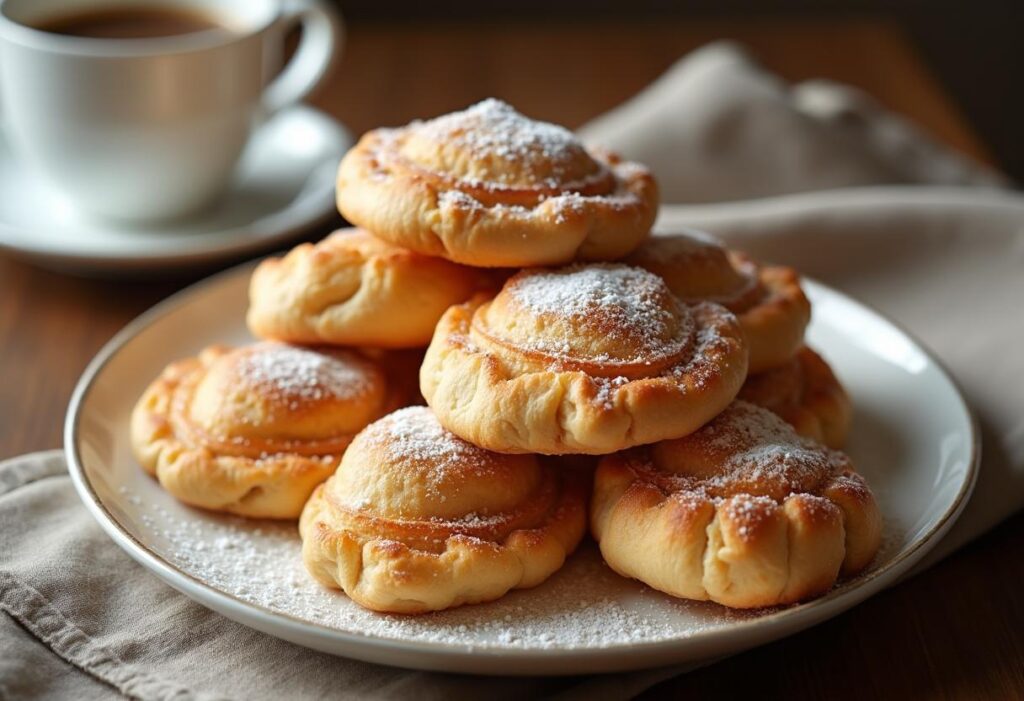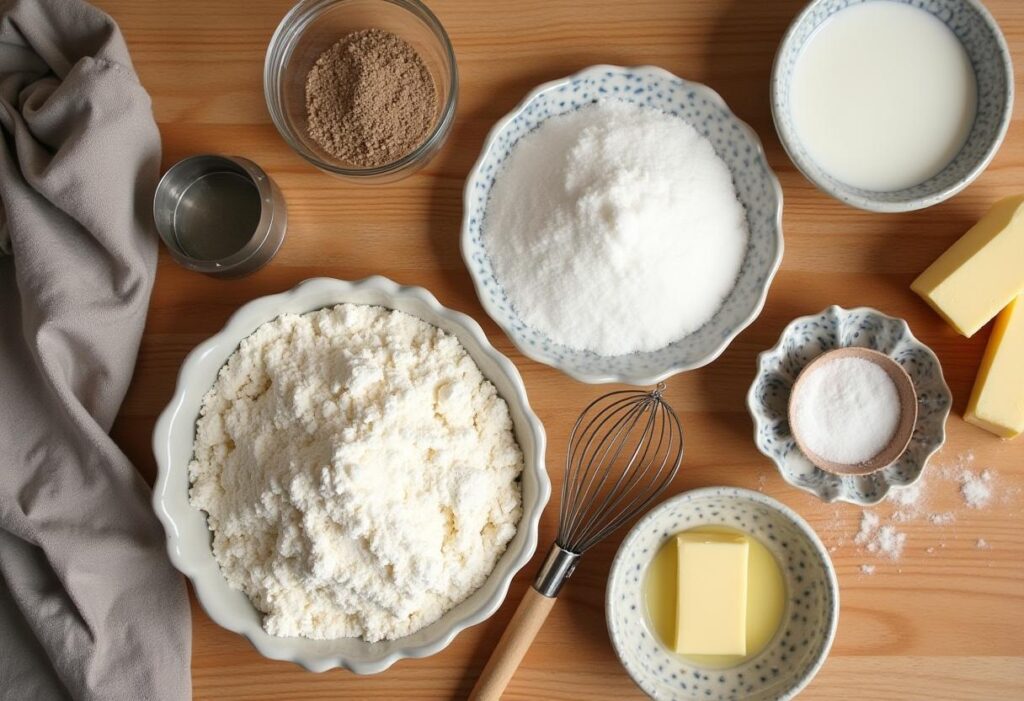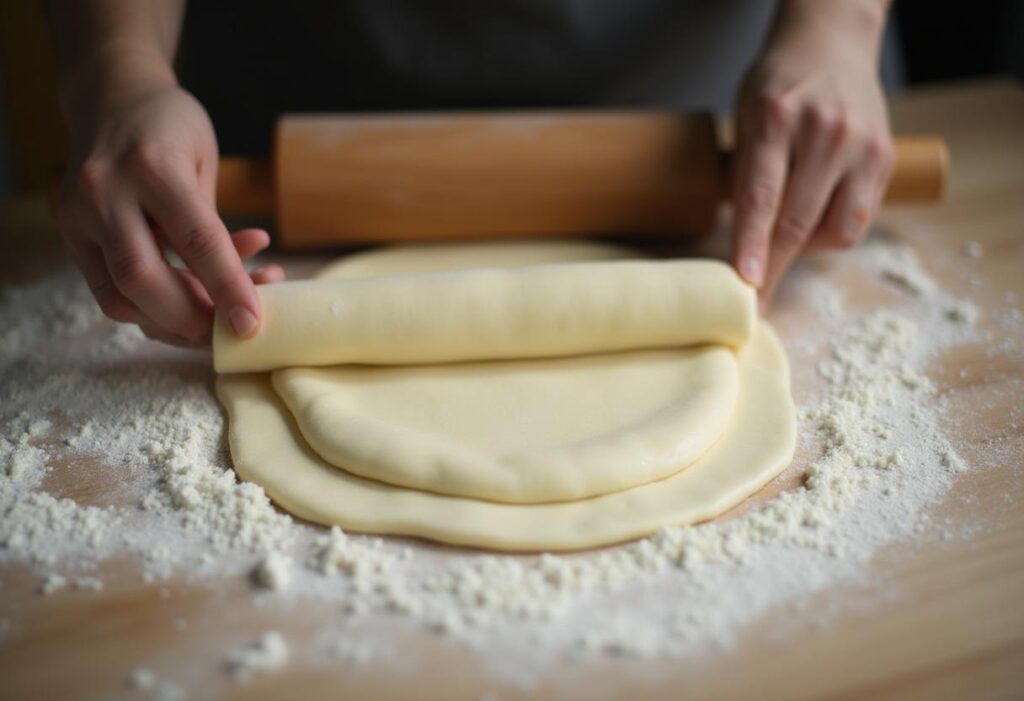
If you’re a fan of pastries, then the perfect gipfeli recipe is something you definitely need to try! These delicious, flaky Swiss pastries are often enjoyed as a breakfast treat or snack. The gipfeli, resembling a croissant, holds a special place in Swiss culture and is a beloved food item in many households across the country. In this guide, we will break down everything you need to know about making the perfect gipfeli, from its rich history to step-by-step preparation.
So, whether you’re an experienced baker or just starting out, this article will provide you with all the tips and techniques for mastering the gipfeli recipe and making them at home with ease. Let’s dive right in!
Table of contents
Introduction to Gipfeli Recipe
What Are Gipfeli Recipe?
Gipfeli are a type of Swiss pastry that’s similar to croissants but are generally smaller and more delicate in texture. The dough is buttery, soft, and flaky, creating a melt-in-your-mouth experience with every bite. Traditionally served for breakfast or with coffee, they are also a popular snack throughout the day.
These pastries can come in a variety of flavors, with some variations featuring sweet fillings like chocolate, almond, or hazelnut. In some regions, you’ll also find savory versions of gipfeli filled with ingredients like cheese and ham. The beauty of gipfeli is that they can be enjoyed in many ways, making them a versatile pastry loved by all.
Cultural Significance in Switzerland
In Switzerland, gipfeli are not just a pastry; they’re part of the country’s rich baking tradition. They are often prepared fresh in bakeries and enjoyed at breakfast tables across the nation. The Swiss take great pride in their pastries, and the gipfeli recipe has been passed down through generations.
Gipfeli are also a symbol of hospitality and community. It’s common to share a basket of these pastries with family, friends, or guests during gatherings, whether it’s a quiet morning or a festive celebration. This practice highlights the warmth and tradition associated with Swiss culinary culture.
Essential Ingredients for Gipfeli Recipe

Flour Selection
When it comes to a gipfeli recipe, the type of flour you use plays a critical role in the final product. Typically, a strong flour (often referred to as bread flour) works best because it provides the dough with the necessary structure to rise properly. This type of flour has a higher protein content, which helps develop gluten and gives the gipfeli that wonderful flaky texture.
If you’re after a softer result, you can mix some all-purpose flour with bread flour. This will allow for a slightly lighter pastry without compromising the dough’s ability to rise.
Yeast and Its Role
Yeast is the key to making the dough rise and become light and airy, which is why it’s an essential ingredient in any gipfeli recipe. While there are many types of yeast to choose from, active dry yeast is the most common for home bakers. Simply activate it with warm water or milk before incorporating it into your dough. This step helps the dough rise properly and gives the gipfeli its airy, fluffy interior.
If you’re using fresh yeast, you can substitute it with the same amount as the dry yeast called for in your recipe. Just make sure you dissolve it well before use.
Butter Quality
Butter is the secret ingredient that gives gipfeli its rich, flaky layers. For the best results, always use high-quality unsalted butter. It’s the fat that creates the signature layers in the dough and helps give the pastry that irresistible buttery taste. Be sure to keep your butter cold when working with the dough, especially when you’re folding it to create the layers.
Some bakers swear by European butter due to its higher butterfat content, which results in an even more indulgent gipfeli. But, no matter what you choose, don’t skimp on the butter—it makes all the difference!
Milk and Sugar
Milk adds richness to the dough, while sugar helps with the browning during baking. Just a small amount of sugar is needed in a traditional gipfeli recipe, not to sweeten the dough but to aid in achieving a golden, shiny finish when baked. Be sure to use warm milk (not hot, as it could kill the yeast) to activate the yeast properly.
Additional Flavorings
Though traditional gipfeli are plain, you can add various flavorings to customize your dough. A dash of salt is crucial to balance the sweetness and enhance the butter’s flavor. Some recipes even call for a hint of vanilla or lemon zest, which can subtly elevate the taste of the pastry.
Now that you know what goes into the dough, let’s move on to how to prepare it in the next section!
Step-by-Step Gipfeli Recipe Preparation
Preparing the Dough
The process of making gipfeli dough is all about patience and precision. Start by mixing your dry ingredients, including flour, yeast, sugar, and salt. Then, add the wet ingredients, such as warm milk and melted butter. Mix everything together until you get a smooth dough that’s soft but not too sticky.
Once the dough is mixed, it’s time to knead. You can knead by hand or with a stand mixer for about 8-10 minutes until it’s elastic. The dough should feel smooth and slightly tacky to the touch, but not overly sticky. When you’re happy with the texture, cover the dough with a damp cloth and let it rise in a warm place for about an hour or until it doubles in size.

Incorporating Butter Layers
Now comes the fun part! Once your dough has risen, it’s time to roll it out. But before you do, you need to prepare the butter for folding. To create those signature layers, you’ll want to use cold butter. Roll it out into a flat square shape, about 1/4 inch thick, and place it on a sheet of parchment paper.
Roll your dough into a large rectangle on a lightly floured surface. Place the butter sheet in the center of the dough and fold the dough over it, sealing the edges tightly. Now, it’s time to roll it out again. This process, known as lamination, involves folding the dough and butter into layers. You’ll repeat this process several times (usually 3 to 4 folds) to create a dough that’s rich with buttery layers.
Each time you fold and roll, refrigerate the dough for 20-30 minutes to ensure the butter stays firm and the dough doesn’t get too soft.
Shaping the Pastries
Once your dough is perfectly laminated, it’s time to shape the gipfeli. Roll the dough into a large rectangle and cut it into triangles (the size of each triangle depends on how large you want your gipfeli to be). Take each triangle and roll it up from the wide end towards the point to form the classic crescent shape. Place each rolled pastry onto a baking tray lined with parchment paper.
If you like, you can make a few variations by filling the gipfeli with chocolate, almond paste, or even jam before rolling them up. For a more traditional touch, simply leave them plain.
Baking Techniques
Now, it’s time to bake your gipfeli recipe to golden perfection. Preheat your oven to 375°F (190°C). Before placing the pastries in the oven, brush the tops with a bit of egg wash (a beaten egg with a splash of water) to give them that gorgeous golden, shiny finish. Bake the gipfeli for 15-20 minutes, or until they’re puffed up and golden brown.
Once they’re out of the oven, let them cool for a few minutes. Then, enjoy the crispy, flaky, buttery goodness of your homemade gipfeli!
That’s how you prepare the perfect gipfeli. In Part 4, we’ll dive into some popular variations of this Swiss classic, so stay tuned!
Popular Variations of Gipfeli Recipe
Sweet Fillings for Gipfeli Recipe
While the traditional gipfeli recipe is simple and delicious, there are plenty of ways to mix things up and add your personal twist. One of the most popular variations includes adding sweet fillings like chocolate or fruit preserves. Chocolate-filled gipfeli are a classic, where you simply add a piece of chocolate at the wide end of the dough before rolling it up.
Alternatively, you can use sweet fruit fillings like raspberry, apricot, or even strawberry jam. These add a tangy contrast to the buttery dough and can be a delightful treat for those with a sweet tooth. For a gourmet touch, try almond paste or hazelnut spread as a filling—it will make your gipfeli taste even more indulgent.
Savory Gipfeli Recipe Ideas
Gipfeli aren’t just for sweet fillings. Savory versions are also quite popular in Switzerland, often served as a snack or light meal. You can fill your gipfeli with cheeses like Gruyère or Emmental and add some ham or herbs for extra flavor. These savory pastries are great for brunches or as part of a picnic spread.
Another savory option is to add sautéed spinach or mushrooms along with cheese, creating a rich, savory filling that contrasts nicely with the light, buttery dough. These savory variations are not only delicious but also versatile, allowing you to experiment with different ingredients based on your preferences.
How to Customize Your Gipfeli Recipe
One of the best things about the gipfeli recipe is its versatility. You can customize the dough itself by adding flavorings like vanilla, lemon zest, or even a hint of cinnamon. Additionally, the shape of your gipfeli can vary—while the traditional crescent shape is most common, you can also make straight rolls or twist the dough into spiral shapes for a fun twist.
If you’re feeling adventurous, try experimenting with different glazes. A simple glaze made with powdered sugar and milk can add a sweet finish, while an egg wash will give your gipfeli a glossy, golden appearance. The possibilities are endless, making gipfeli a pastry that you can enjoy in many ways.
For more delicious recipes, check out our article on White Chocolate Covered Pretzels for another treat that pairs wonderfully with coffee.
Tips for Perfecting Your Gipfeli
Mastering the Lamination Process
To make sure your gipfeli recipe comes out as flaky and buttery as possible, mastering the lamination process is key. This is the process of folding butter into the dough multiple times to create thin layers. When rolling out your dough, be sure to keep the butter cold and firm. If it becomes too soft during the folding process, it will melt into the dough and result in a less flaky texture.
It’s also important to rest the dough in between folds to prevent it from becoming too soft. This will help keep the layers distinct and ensure your gipfeli rise properly in the oven. If you don’t have enough time to chill the dough, you can refrigerate it for shorter intervals, but don’t skip this crucial step!
Baking at the Right Temperature
Another tip for perfecting your gipfeli is ensuring your oven is at the right temperature. Preheat the oven to 375°F (190°C) to ensure even baking. If your oven is too hot, the outside of the gipfeli may brown too quickly, while the inside remains undercooked. If it’s not hot enough, they might bake unevenly and lack the desired puff and flakiness.
Keep a close eye on your pastries as they bake, checking for that golden-brown color that indicates they are fully cooked. Every oven behaves differently, so you may need to adjust the baking time slightly based on your oven’s performance.
Storing Your Gipfeli
Once baked, gipfeli should be enjoyed fresh for the best taste and texture. However, if you need to store them, keep them in an airtight container at room temperature for up to 2 days. For longer storage, freeze them after baking. When ready to enjoy, simply reheat them in the oven to regain that crisp, flaky texture.
Making the perfect gipfeli recipe takes a bit of patience and practice, but with these tips, you’ll be able to bake up delicious, buttery pastries every time. Happy baking!
Conclusion
Why You Should Try Making Gipfeli at Home
Baking your own gipfeli recipe is a rewarding experience. Not only do you get to enjoy fresh, buttery pastries straight out of the oven, but you also gain a deeper appreciation for Swiss baking traditions. With a little patience and practice, you’ll soon be able to create the perfect gipfeli, whether you prefer them sweet or savory.
There’s something truly special about homemade baked goods, and making gipfeli at home allows you to control every step of the process, from the dough to the fillings. Plus, the end result is always worth the effort. So, why not gather your ingredients and start baking? Whether for breakfast, a snack, or a special occasion, gipfeli will surely be a hit with family and friends.
Happy baking, and we hope you enjoy creating your own delicious, flaky gipfeli! For more sweet and savory recipes, feel free to explore the other delicious options on our site.
FAQs
What is the Difference Between a Croissant and a Gipfeli?
Although both croissants and gipfeli share a similar flaky, buttery texture, the main difference lies in the dough. Croissants are made with a slightly sweeter dough and often have a richer, softer texture. In contrast, gipfeli dough is typically less sweet and can have a slightly more crumbly texture. Moreover, gipfeli is usually shaped into a crescent while croissants can sometimes have a more pronounced, open curve. The origins also differ: croissants are French, while gipfeli is a Swiss pastry.
What Are the Ingredients in Gipfeli?
The basic ingredients in a gipfeli recipe include flour, butter, sugar, milk, yeast, and salt. These simple ingredients combine to create the signature flaky, buttery texture. The dough is rolled and folded to create layers, which give gipfeli its delicate, airy feel. You can also add optional ingredients like eggs or a little vanilla for extra richness, and fillings such as chocolate, jam, or cheese, depending on your preference.
What is the Secret to a Good Croissant?
While this question pertains to croissants, the principles apply to making gipfeli too. The secret to a perfect croissant (or gipfeli) lies in the lamination process. This is the process of folding cold butter into the dough multiple times, which creates thin, distinct layers. Using the right type of butter and keeping it chilled is crucial for achieving that signature flaky texture. Consistency in rolling and folding the dough also plays a big part in achieving the perfect result.
What is a Common Mistake in Croissants?
A common mistake is letting the butter melt into the dough, which prevents the creation of flaky layers.
